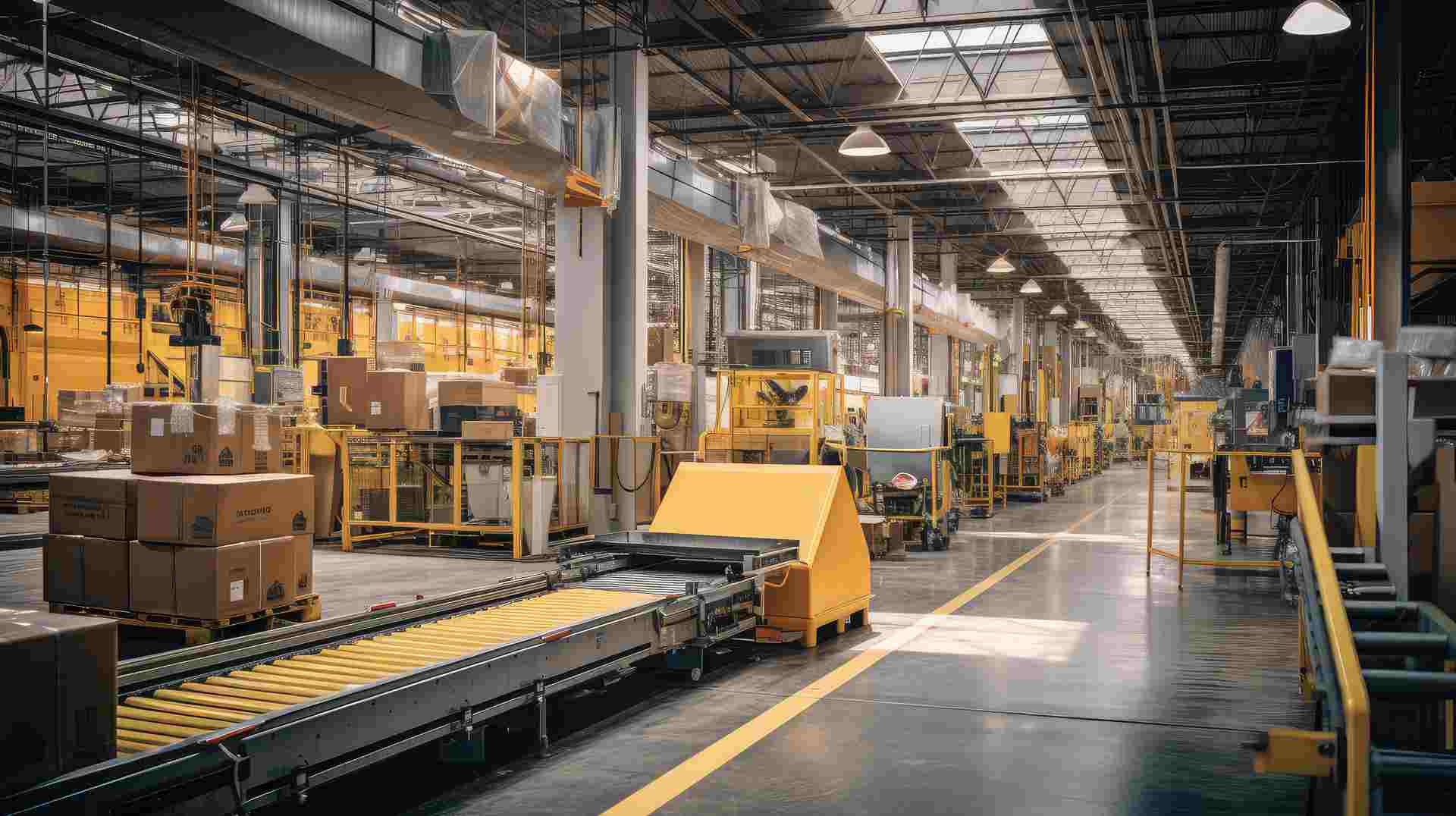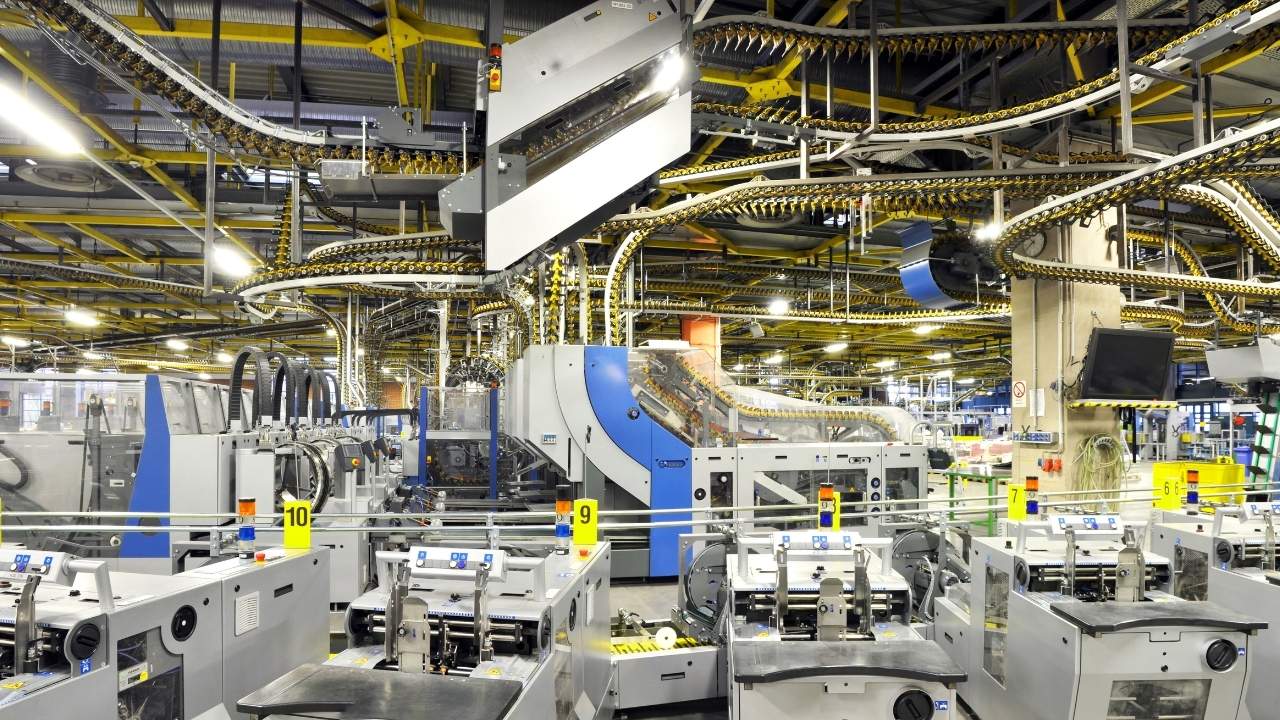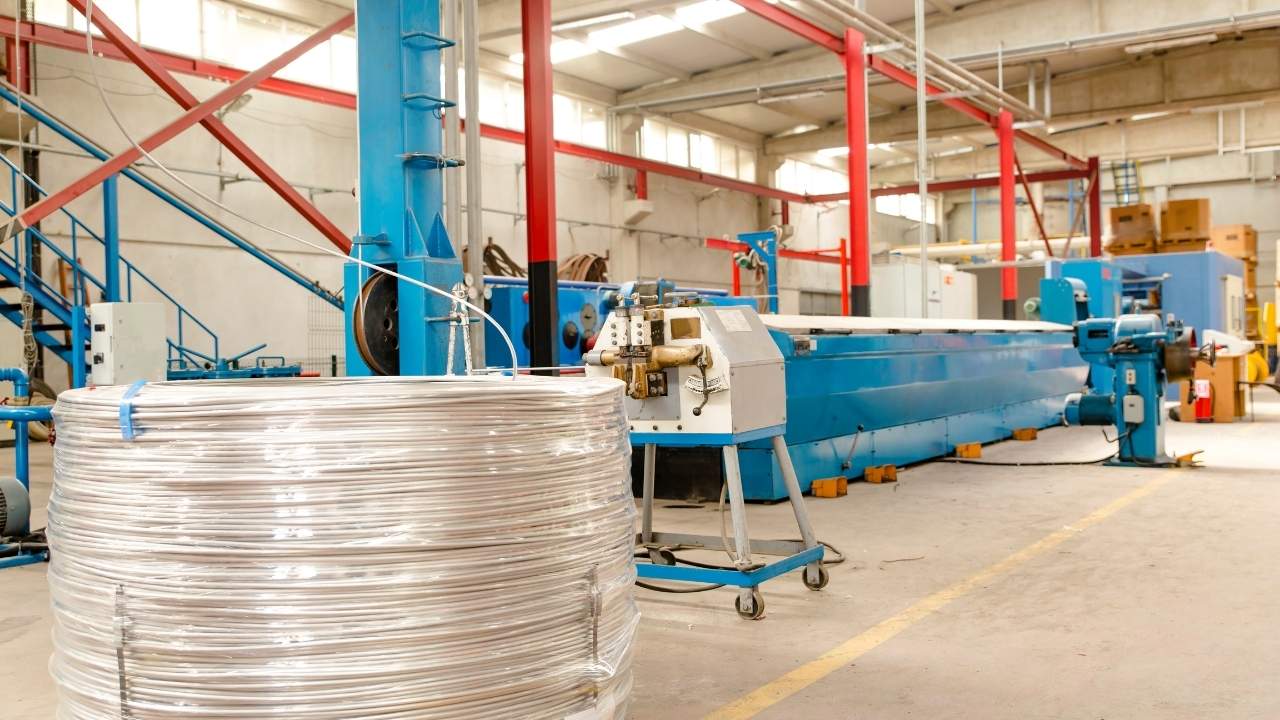Explore with Versa Cloud ERP the connection between efficient logistics costs and accurate financial reporting.
Introduction
Logistics costs refer to expenses incurred in the movement and storage of goods from the point of origin to the point of consumption. Key components include transportation, warehousing, inventory carrying, and administration expenses. As logistics accounts for a sizable portion of a company’s overall costs, effectively managing and reporting these expenses is critical for business success.
Financial reporting provides a structured system for recording, classifying, and analyzing costs like logistics. It enables businesses to track spending, identify inefficiencies, forecast future budgets, and make strategic decisions to bolster profitability. The interplay between logistics costs and financial reporting is therefore integral for cost control and driving organizational growth.
This article will provide an in-depth overview of the relationship between logistics costs and financial reporting. It will cover:
- The key elements constituting logistics costs
- Factors impacting logistics expenses
- The role of financial reporting in recording freight spending
- How logistics costs influence financial statements
- Current industry trends in logistics cost optimization
- Technological innovations to enhance transparency
- Strategic recommendations for managing logistics costs
Understanding Logistics Costs
Logistics costs broadly comprise expenses related to the storage and movement of inventory from suppliers to end consumers. Main constituents include:
Warehousing Expenses
Facilities, equipment, labor, and activities related to the short or long-term storage of goods contribute to warehousing costs. Key expense items are:
- Warehouse rents
- Material handling gear maintenance
- Inventory tracking systems
- Payroll for staff managing stocking, picking, and packing functions
Proper classification of these costs is essential for analysis.
Transportation Costs
Transporting raw materials, components, and finished products via road, rail, sea, and air freight makes up a sizable share of logistics expenses. This includes:
- Fuel costs
- Labor costs
- Administrative costs
- Lease costs for fleet operations
Detailing modal costs is vital for identifying cheaper shipment alternatives.
Labor Costs
Wages given to logistics department staff managing:
- Inventory flows
- Freight forwarding
- Stocking
- Distribution center operations
- Last mile delivery
Labor costs are largely fixed; maintaining optimal staff strength is imperative.
Equipment and Maintenance
Costs incurred in procuring, installing, and maintaining logistical equipment such as:
- Storage systems
- Material handling gear
- Packaging machinery
- Fleet vehicles
Monitoring these ownership costs is key from a cost control standpoint.
In addition to these direct costs, logistics overheads like insurance, technology systems, and consultancy fees must also be accurately tracked for analysis. Proper classification and recording of these expenses are essential.
Factors Influencing Logistics Costs
Some key factors that impact overall logistics costs include:
Geographic Location
- Warehousing and transport costs differ extensively based on proximity to demand centers and trade networks.
- Establishing distribution hubs at optimal locations considering cargo routes and volumes is vital in balancing expenses.
Supply Chain Complexity
- Intricate supply chains with multiple entities, global sourcing, and customized logistics requirements entail higher costs for coordination and freight movement.
- Simplified flows ensure leaner operations.
Market Volatility
- Fluctuations in demand, input prices, and transport rates affect logistics costs due to the need for buffer stock and premium freight in lean periods.
- Updated demand planning and agile operations help mitigate uncertainty.
As expenses fluctuate with business needs, regular performance reporting, budgeting, and analysis are vital for logistics cost management. This is enabled by financial recording principles and practices.
Financial Reporting in Logistics
Maintaining updated records of logistics costs in financial statements is crucial for tracking expenses and making data-backed decisions on inventory movements. Key facets in recording freight costs include:
Accounting Principles
- Typically, logistics costs are captured as Operating Expenses under the Supply Chain, Transportation, or Fulfillment departments.
- Sub-categories for warehousing, transport, labor, and equipment costs are maintained as per GAAP standards for expense classification to enable analysis.
Freight Cost Reporting
- Freight invoices comprise various accessorial charges.
- Detailed cost compilation in cost centers designated for inbound/outbound transport and parcel deliveries is vital.
- This aids reconciliation with carrier payment data.
GAAP Compliance
- Adherence to Generally Accepted Accounting Principles (GAAP) ensures consistency in financial reporting over time periods.
- This includes principles like matching costs to relevant periods and maintaining conservatism in estimates.
The level of detail in accounting and consistency in reporting plays a key role in understanding logistics cost performance. The interplay between expenses and financials also influences key organizational metrics.
The Interplay Between Logistics Costs and Financial Reporting
Logistics costs directly impact key financial statement elements and business health metrics as outlined below:
Profit and Loss Statements
- As logistics is an operating expense, changes in warehousing, freight, and labor costs flow directly to the P&L statement.
- An increase of 8% in transport costs could dent profit margins by the same degree, indicating the need for prompt countermeasures.
Balance Sheets
- Inventory accounts for nearly 30-70% of current assets for retail and distribution firms.
- Optimizing logistics to reduce safety stock levels enhances working capital availability directly.
- This improves reliance and liquidity ratios accordingly.
Budget Statements
- Baseline logistics costs constitute a reference point for annual budgets and variance analysis.
- Fluctuations in actual freight/labor costs against plans aid organizations in forecasting future expense provisions better.
Key Performance Indicators
- Logistics Cost as a % of Sales
- Inventory Turns
- Days Sales Inventory
These metrics quantify the efficiency in freight spending and working capital locked in inventory. They guide enhancement initiatives undertaken by businesses.
The accuracy and granularity of financial postings hence serve as the foundation for logistics optimization across the enterprise. However, certain prevalent challenges can undermine this interplay.
Common Challenges
Some key reporting challenges that distort logistics cost analysis include:
- Misclassified Expenses
- Incorrect booking of outbound freight under warehousing overhead accounts skews analysis on transport rate performance.
- Clearly, designated cost centers aid appropriate classification.
- Erroneous Inventory Accounting
- Overvalued inventory stock due to duplicated postings, incorrect freight cost capitalization, and unrecorded stock loss leads to inflated carrying costs.
- Periodic reconciliation with actual warehouse inventories is essential.
- Untimely Recognition
- Delayed recording of transport costs due to prolonged freight invoice processing leads to costs spilling over to subsequent periods.
- This impacts budgetary analysis.
- Lack of Granularity
- Clubbing small parcel shipping charges under the same account head as full truckload (FTL) freight transport obscures modal cost analysis and optimization opportunities.
Thus, a key prerequisite for effective financial planning and logistics enhancement is establishing clear, granular, and accurate recording of all freight expenses consistently as per accounting standards and business needs. This sets the stage for detailed data-based inquiry and decision-making.
Industry Trends and Challenges in Logistics Cost Management
Global business trends, developments like COVID-19, and inherent challenges in developing countries are driving transformations in logistics cost management approaches as outlined below:
Current Optimization Trends
The drive to enhance logistics productivity has sparked changes such as:
- Integrated technology adoption
- Centralized distribution
- Dynamic routing
- Lower-cost modal shifts
- Streamlined material flows
Leading entities project over 20% in cost savings from these initiatives.
Impact of COVID-19
The pandemic disrupted supply chains and transport capacity globally while boosting demand for essential goods. Mitigating risk via:
- Buffer stock
- Business continuity planning
has become vital despite inflating logistics costs.
Developing Country Challenges
- Complex clearance processes
- Inadequate infrastructure
- Fragmented logistics services
These factors escalate costs in developing countries like India. The upcoming National Logistics Policy aims to reduce impediments through:
- Procedural streamlining
- Integrated IT solutions
- Infrastructure upgrades for cost optimization
However, disparities in practices across regions underline the need for localized strategies. Logistics infrastructure development combined with technology adoption and financial control innovations can drive significant productivity improvement along with cost efficiency for firms operating in emerging economies.
Technological Innovations in Logistics Cost Management
Integration of solutions like digital platforms and data analytics is transforming logistics cost management for enhanced efficiency, lower expenses, and improved visibility.
Digital Platforms
- Centralized online portals for trade documentation, shipment tracking, carrier onboarding, and multi-party collaboration
- Enable information integrity
- Streamline processes to minimize overhead and demurrage expenses
- Allow seamless data sharing for analysis
Data Analytics
- Sophisticated analytical models help identify cost drivers
- Predict future budgetary needs
- Pinpoint optimization areas across the supply chain
- Provide actionable insights to business leaders for targeted logistics enhancement
The collective impact of these emerging technologies—when integrated across the logistics value chain—is profoundly positive. Global trials indicate over 8-12% in overall freight cost savings, a substantial reduction in process-oriented expenses, and newer possibilities for network optimization. Their widespread adoption can boost both cost efficiency and strategic gains.
Strategic Recommendations for Managing Logistics Costs
Given the solutions now available and trends toward centralization, some strategic measures organizations can undertake to optimize logistics costs include:
Leverage 3PL Partnerships
- Third-party logistics providers aggregate shipments across clients to obtain volume-based freight discounts and improved asset utilization.
- Their specialized expertise in warehouse and transport management helps optimize costs for clients without massive fixed investments.
Deploy Multi-Echelon Distribution
- A network of region-specific warehouses instead of a central facility allows optimized inventory placement closer to demand zones.
- Balances cost and customer service levels while lowering taxes, duties, and long-haul transport expenses.
Enable Data-based Decisions
- Logistics planning and cost management powered by data-backed analytics provide tangible improvements over experience-based decision-making.
- Optimized shipment sizes, asset utilization, modal selection, and inventory flows are just some of the use cases benefiting from modern technology integrations.
In summary, detailed cost reporting, performance benchmarking, and evidence-based improvement initiatives enabled by the latest technological capabilities can bring step-change benefits in logistics cost optimization—directly benefiting the bottom line.
Conclusion
Logistics costs have a multi-faceted relationship with financial reporting. Recording principles form the basis for monitoring expenses. The accuracy and timeliness of postings directly impact planning, analysis, and business metrics that guide enhancement initiatives.
Conversely, optimizations in freight movement and storage directly reduce operating costs and free up working capital to invest in growth priorities, thus benefiting the balance sheet.
With rising global uncertainty and complexities, establishing integrated logistics management capabilities aided by emerging technologies is vital for cost control. Significant long-term gains can arise from detailed reporting structures, data-backed analysis, and strategic adoption of logistics best practices as outlined here.
Unlock the full potential of your logistics and financial operations with Versa Cloud ERP.
Our comprehensive, cloud-based solution is designed to seamlessly integrate your logistics costs with financial reporting, providing real-time insights and streamlined processes tailored to your unique business needs.
Schedule a free customized demo today to discover how Versa Cloud ERP can transform your cost management strategies, enhance financial transparency, and drive your business toward sustained growth and profitability. Let us show you the difference that advanced technology and expert support can make in optimizing your logistics and financial performance.
A Business in the modern day is complex and requires resources to deliver on its goals and achieve its full potential. To create a small business success story business owners need an ERP system that grows with them.
Effectively manage your financials, inventory, and production workflows with our award-winning ERP.
Let Versa Cloud Erp’s do the heavy lifting for you.
[widget id=”custom_html-40″]
[widget id=”custom_html-42″]
[widget id=”custom_html-30″]
Do Business on the Move!
Make your businesses hassle-free and cut the heavyweights sign up for the Versa Cloud ERP today!!
Join our Versa Community and be Future-ready with us.
[widget id=”custom_html-20″]






